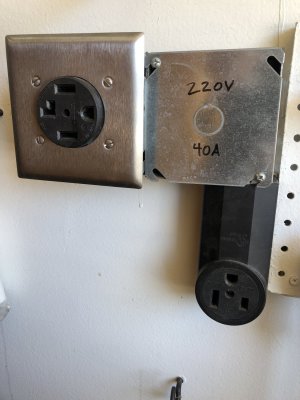- Joined
- Sep 8, 2019
- Messages
- 4,392
I ran out of space in my garage, & now I am moving my welding table outside.
My 220V, 40A outlet needs to stay where it is because it is needed for 3-phase machine tools.
At this welding outlet (I will post a photo), I have an extra 4-prong, single phase female receptacle which is no longer needed.
I want to dedicate that second outlet (which also has a 40A circuit breaker) for my welding. My welding will occur about 50 feet away from here. My welding machines are all single phase 220V & only go up to 255A.
My 220V, 40A outlet needs to stay where it is because it is needed for 3-phase machine tools.
At this welding outlet (I will post a photo), I have an extra 4-prong, single phase female receptacle which is no longer needed.
I want to dedicate that second outlet (which also has a 40A circuit breaker) for my welding. My welding will occur about 50 feet away from here. My welding machines are all single phase 220V & only go up to 255A.

